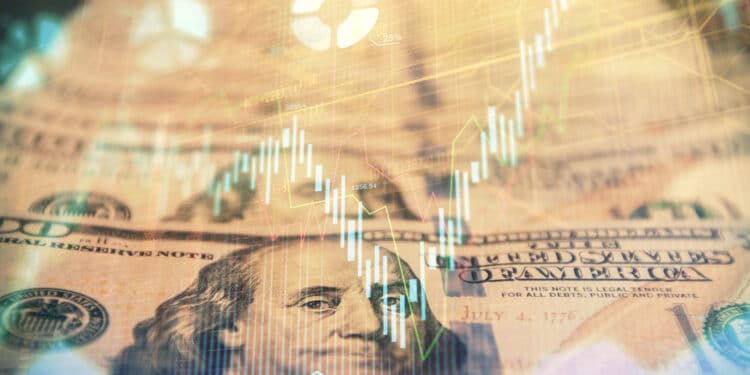For amateur traders, money management is that elephant in the room. It seems like an uncomfortable topic to discuss, yet many know it’s the key to consistent profits in the markets.
Every successful trading strategy focuses on what occurs before entry and, just as importantly, what happens afterward. The money management topic is a lot more complex than simply deciding on a sufficient stop loss and take profit distance.
Hence, this article will cover five crucial tips applicable to any trader to improve their overall money management in forex.
Understanding that risk is constant and reward is potential
This tip is fundamental in describing the inherent uncertainty of being a forex trader. Despite your level of analytical skills, every executed position is nothing more than a chance. Once a trade goes live, no matter the potential it may show at face value, things can always go the other way.
Most literature suggests trading is a binary of absolute losers and winners. However, the reality is far different. More often than not, some positions fall in the middle. What does this mean?
For instance, let’s assume someone’s average risk to reward is 1:5, where each losing position is -1R and every winning order is +5R. It’s crucial to understand that even if a trade doesn’t result in you losing money, it’s no reason to assume it will go to your profit target.
Hence, you need to implement solid trade management, assessing the potential for price to reach this level and locking in profits at logical levels, allowing the market sufficient room to move. It’s quite common for traders to let a position in profit (but not quite to their desired target) turn into a smaller profit or even a loss.
Therefore, the risk is constant, and the reward is variable. It’s about managing the grey area in between and never holding a position for too long in search of a defined target even when the price responds differently.
Thinking of the real monetary amount risked more instead of the account percentage
Most literature suggests the proverbial ‘1% or 2% per account’. While this concept is conservative, it is only half the story. Firstly, the human brain tends to personalize the percentage as less severe than the actual money on the line.
Instead, internalizing the actual monetary amount (whether in dollars or another currency equivalent) is more significant because it determines the level of someone’s personal tolerance on the trade.
More important is keeping this amount consistent in every position. The same logic goes for when the lot sizes gradually increase. One of the big problems with the percentage model is, while it makes traders lose less during a series of losing trades, the recovery back to their initial point is slower.
This is because the monetary amount also shrinks. Yet, using a fixed amount is more logical, and the recovery period is shorter. There are certain situations where traders would reduce their risk during a losing period, though this should occur while enhancing their recovery time as quickly as possible.
The percentage model isn’t necessarily useless. It is crucial to risk a relatively small portion of your account to account for any drawdowns and losing streaks. What’s more effective is always thinking in dollar terms and keeping this consistent on every trade.
Position sizing like a pro
Appropriate position sizing is money management 101. A trader should approach trading every opportunity uniquely in terms of the stop loss. Amateurs will tend to use the same stop loss distance irrespective of the trade in question, which is a bad practice.
A professional understands they need to determine their risk exposure by choosing an appropriate position size based on a logical stop distance as per the setup. In other words, the distance can never be the same, and other pairs as each pip have different values for every market.
Another issue is using the exact lot sizes regardless of the pair. Like the stop loss problem, fixing this all boils down to understanding how to position size correctly.
Comparing the win rate and risk-to-reward together
Although focusing too much on winning percentages doesn’t offer anything valuable, it still plays a role in a trader’s performance. The rule of thumb seems to be that if you trade more frequently, you typically aim for lower rewards and use smaller stops.
Hence, the inherent win rate needs to be higher to cover up your losses. You need more wins because the profits are lower (meaning the percentage naturally has to increase).
On the other hand, the less one trades, the higher the profit targets with larger stops (lower win rate). Therefore, the win rate is generally lower since the more enormous rewards cover the losses. In both cases, the moral of the story is that mathematically, you do not need a very high win rate to make money in the long run.
The more frequently someone trades (day traders, scalpers, etc., the lower their risk-to-reward ratio should be, assuming the win rate is above 50%. Conversely, the less regularly you trade (swing traders, position traders, etc.), the higher this ratio must be, presuming the winning percentage is less than 50%.
Watching out for correlations
Correlations refer to the positive and negative directional price relationships between two pairs. For instance, the EUR/USD and USD/CHF historically share an inverse correlation. So, when the former moves up in price, the latter tends to drive lower in value the majority of the time. The reason why understanding the correlation relationships is crucial is not to unknowingly double up on the risk.
For instance, taking a buy position on the euro and a sell position on the USD/CHF doubles the potential for loss if both pairs generally move in the opposite direction. The point is always to be aware of these relationships when entering multiple positions simultaneously.
You never want to take positions on different pairs with an undesired opposite effect because there’s a real danger of losing more than intended.
Final word
Aside from having a repeatable and proven edge, profitable trading boils down to your ability to count. Trading is largely a numbers game where you are faced with many unknown scenarios where your capital is always at the risk of dwindling.
This article has detailed many of these circumstances. It is up to traders to recognize whether these occurrences happen and find suitable methods of mitigating them effectively.




